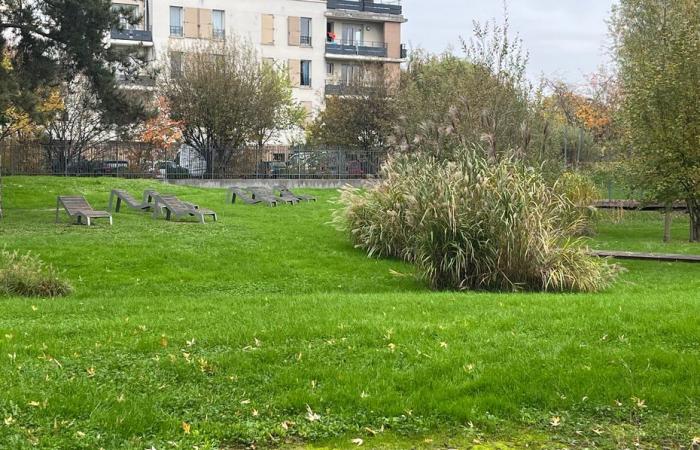
Could Greater Paris be the victim of floods like in Spain? In Villeneuve-le-Roi, a town already flooded following heavy rains, improvements have been made. An example of the risk prevention policy carried out by the Greater Paris Metropolis.
The essentials of the day: our exclusive selection
Every day, our editorial team reserves the best regional news for you. A selection just for you, to stay in touch with your regions.
France Télévisions uses your email address to send you the newsletter “The essentials of the day: our exclusive selection”. You can unsubscribe at any time via the link at the bottom of this newsletter. Our privacy policy
Villeneuve-le-Roi (Val-de-Marne) is located east of Orly airport, but above all on the banks of the Seine. A municipality likely to be affected by a flood of this river. A risk taken seriously by the city, already victim of flooding in 2016 and 2018.
The municipality has built facilities in the lower part of the city to reduce the impacts of a sudden rise in water levels.
These devices come in the form of dikes, small basins or even parks. Innovative developments supported by the Greater Paris Metropolis.
Didier Gonzales has been the mayor (Les Républicains) of Villeneuve-le-Roi since 2001. 23 years at the head of the commune, where he was able to witness flooding of the Seine. First element of its plan to avoid suffering further damage from sudden rises in water: the development of a large park on the banks of the Seine. With its large expanses of grass, its deckchairs and its children's games, it makes you forget its vocation. This large space makes it possible to contain excess water during floods of the river located just behind.
duration of video: 00h01mn01s
At the microphone of Toky Nirhy-Lanto, the mayor (Les Républicains) of Villeneuve-le-Roi Didier Gonzales.
•
©France Télévisions
“Slightly dug parks which act as 'storm basins', to capture water. This water captured at home means that it does not go elsewhere, and does not enter homes. It then comes from the network of valleys that we imagined and created“, specifies the mayor of the town. These valleys are in fact on either side of this park located on the banks of the Seine. From the outside, we see plants which seem immersed in a large pool, but they in fact fulfill a crucial role.
“These are ditches which accommodate this water in the event of overflows. It is then directed to medium ditches, which then channel the water to large ditches. We manage to almost contain the flood, when it comes through runoff, that is to say in the event of heavy rain, as we sometimes find in Spain in particular. When it comes to the Seine overflowing, however, the effectiveness is more limited, because the quantity of water is such that we can only limit the effects for a few hours.“, explains the mayor.
Valleys are built in town to protect homes.
•
© Toky Nirhy-Lanto / France Télévisions
After observing the environment in front of us, we must also take a look at the ground and the roads. In the streets facing the quays of the Seine, the bitumen sometimes gives way to paving stones. “Disjointed paving stones” specifies the mayor. The space left between each paving stone allows water to enter the ground, in the same way as the islands of greenery created in the streets.
On this street and in others located on the banks of the Seine, the paving stones are disjointed. They allow water to enter the ground, thus reducing a flood and leaving the road usable in the event of a flood.
•
© Toky Nirhy-Lanto / France Télévisions
Not to mention enhancements, to avoid impacts on homes. Starting with the raising of electric meters and certain roads, which are strategic in the event of a problem. “To feed the population, it was necessary to determine strategic axes. The new homes are generally above the level of the 1910 flood, however there are still roads which are not. Refueling is then not possible. There are therefore two strategic axes which have been developed in the city“, details the elected official.
Villeneuve-le-Roi is part of the Greater Paris Metropolis, created in 2016. It brings together 131 municipalities and is chaired by Patrick Ollier, mayor (Les Républicains) of Rueil-Malmaison (Hauts-de-Seine). It is she who exercises the GeMAPI competence, for “management of aquatic environments and flood prevention“.
READ ALSO ► REPORTING. In Vauhallan, the meanders of a stream are being redesigned to better combat flooding
“When the river overflows, you have to move to another scale. This is the action of the Greater Paris Metropolis. The main focus is to work upstream. We need to build structures, large lakes that retain water. In towns along the Seine and Marne, build dikes and clear rivers on black spots and difficult spots.“, explains the mayor of Villeneuve-le-Roi and also advisor to the Metropolis in charge of this GeMAPI.
The Metropolis' strategy is as follows: store as much water as possible upstream, to prevent it from flooding populations. “This involves carrying out work on the basins upstream of the river, working together to have the means to carry out these works which retain the water as much as possible. It must not flood the downstream part, that is to say Paris and all the municipalities below. The means are very important, since we are talking about 800 million cubic meters of retained water“, adds the elected official. Which is already based on 4 reservoir lakes which have existed since 1970, in Morvan and Champagne.
An objective which is also materialized by the support of the Metropolis for the construction of the Casier-Pilote de la Bassée. “It is better to flood reservoir lakes like the Bassée provided for this purpose, rather than the towns“, underlines Didier Gonzales. This work must extend over 360 hectares and must come into service next February. This space is surrounded by dikes, and it must be able to temporarily contain up to 10 million cubic meters of water. This is the first part of a project to build eight more lockers, to hold a total of 55 million cubic meters of water.





